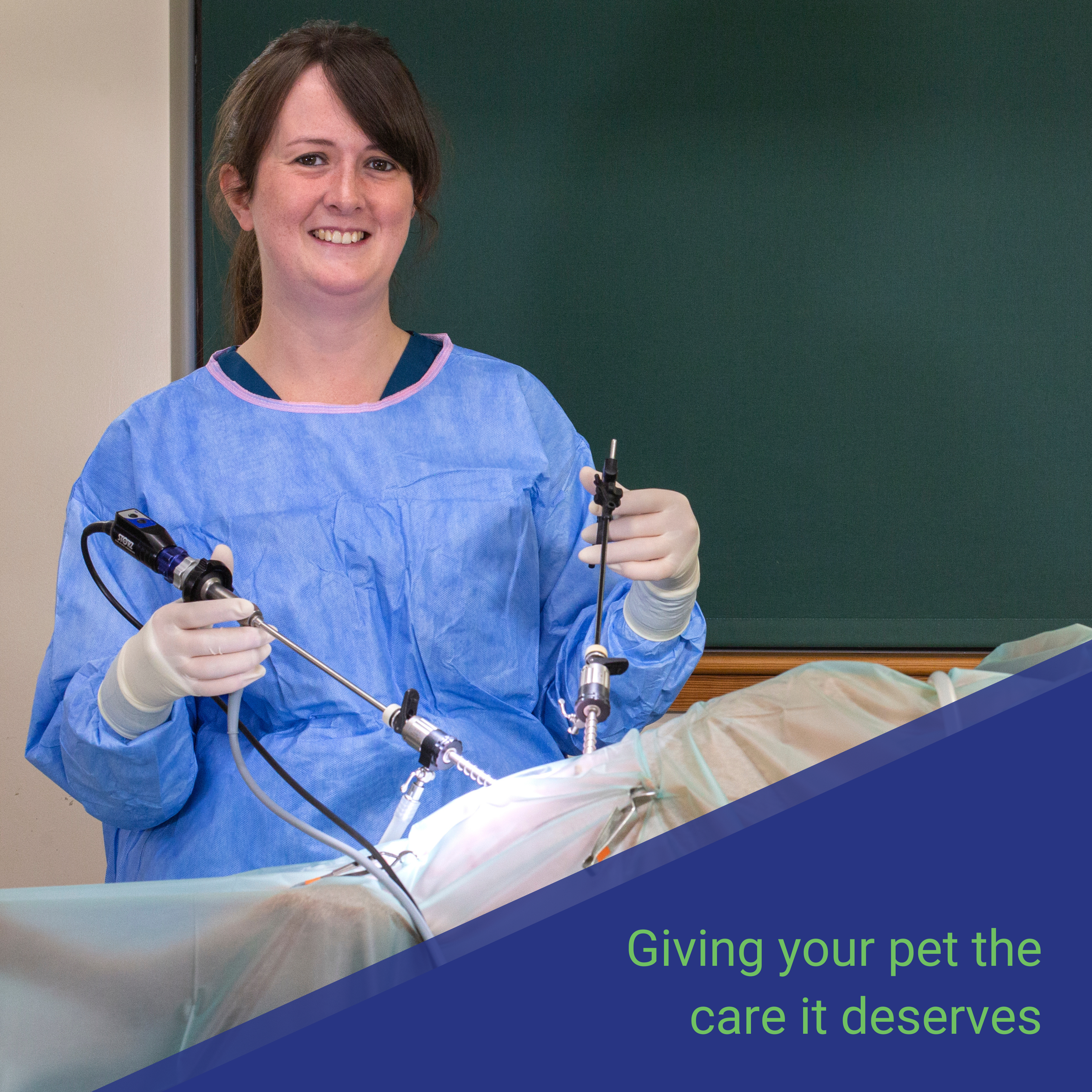Just as keyhole surgery has advantages in humans, the same opportunity now exists for our pets
Keyhole surgery is minimally invasive surgery involving passing a camera and specialised instruments through tiny incisions in the body wall.Due to the positioning of the instruments, a large clip area is required on both sides and the abdomen to ensure the area is aseptic. The operation is performed through two small incisions 0.5 – 1.2cm (compared to 6 – 15cm for traditional bitch spays).
The camera (laparoscope) is placed through one incision, and slender instruments through the other. The surgeon can then visualise the ovaries onthe screen and remove them. Cautery is used to stop blood flow to the ovary and scissors can then cut the ovarian ligament. The small incisions are thenclosed with absorbable stitches under the skin, and sealed with tissue glue. Studies confirm that leaving a normal healthy uterus behind causes no issues long term.

If you have a young bouncy dog who might be difficult to keep quiet for 10-14 days post op, or you are worried about your dog licking and chewing at a wound, keyhole surgery will make life easier for you.
We are also able to perform an increasing number of procedures by keyhole surgery. We are able to perform exploratory surgery in our more fragile patients to help secure a better understanding of what the problem might be. We are also able to perform laparoscopic assisted gastropexy in larger dogs to reduce the risk of potentially fatal twisted stomachs.
There are a number of advantages compared to a traditional bitch spay:
• Less pain after surgery
• Smaller incisions
• Faster recovery time (3 days)
• No external stitches to chew (so no buster collar)
• Faster healing times
• Fewer post-operative complications
• Clearer view and magnification for the surgeon
When is the best time to neuter my female dog?
We recommend neutering female dogs 3–4 months after their season. If opting for keyhole spay, the recommended timing is 4 months post-season. For full details and personalised advice, please call the surgery to speak with one of our vets or nurses.
How long does the operation take?
Surgical time depends on the patient, but is usually around 1 hour. Patients recover quickly and in the majority of cases go home the same day.
Does my pet require pain relief at home?
Not usually – another advantage of this procedure is that the wounds are so small most animals get a 24 hour injection of pain relief on the day of the surgery, and do not require any pain relief after this.
Keyhole surgery FAQs – Thrums Vets in Angus and Perthshire
Keyhole surgery, also known as laparoscopy, is a minimally invasive procedure performed through small incisions using specialised instruments and a camera. It allows us to treat internal conditions with less pain, with faster recovery times.
We use keyhole techniques for procedures such as spaying, liver biopsies and bladder stone removal. It’s ideal for conditions where traditional open surgery is unnecessary.
This type of surgery causes less trauma, offers quicker recovery times, results in smaller scars and often reduces postoperative pain. Many pets go home sooner compared to traditional surgery.
For some procedures, such as spays, cats and small dogs may not be the best candidates for keyhole surgery simply because of their size. We assess each case individually based on your pet’s overall condition and the specific procedure required.
Your pet must fast from midnight before surgery and stay hydrated until the morning. We will provide detailed instructions when you book the procedure.
After surgery, your pet may experience mild discomfort and need a recovery cone. We’ll supply pain relief medications and guide you through activity restrictions and wound care.
Call or visit your local branch to schedule a consultation. We’ll discuss suitability, costs and walk you through the procedure step by step.
